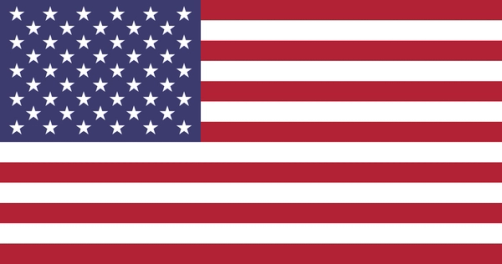Donate to Support Supercluster
Your support makes the Astronaut Database and Launch Tracker possible, and keeps all Supercluster content free.
SUPPORTSupercluster on Patreon
Your support makes the Astronaut Database and Launch Tracker possible, and keeps all Supercluster content free.
SUPPORTThis goes
to space
X-37B Mission 8
The Boeing-built X-37B returnable spaceplane is gearing up for its eighth mission (OTV-8), less than six months after the successful completion of its seventh mission in March.
Specs
Crew: none
Capacity: 227 kg
Length: 29 ft 3 in (8.92 m)
Wingspan: 14 ft 11 in (4.55 m)
Height: 9 ft 6 in (2.90 m)
Max takeoff weight: 11,000 lb (4,990 kg)
Electrical power: Gallium arsenide solar cells with lithium-ion batteries
Payload bay: 7 × 4 ft (2.1 × 1.2 m)
Performance
Orbital speed: 17,426 mph (28,044 km/h)
Orbit: Low Earth orbit to high Earth orbit
Orbital time: 270 days (design) 908 days (demonstrated)
New technological frontiers
OTV-8 is equipped with a service module, which offers greater capacity for experiments and additional flight opportunities for mission partners, including the Air Force Research Laboratory and the Defense Innovation Unit.
The mission will host demonstrations of high-bandwidth inter-satellite laser communications technologies, as well as the highest-performing quantum inertial sensor ever tested in space. The U.S. Space Force will leverage insights from this mission to inform future space architectures.
"OTV-8’s laser communications demonstration will mark an important step in the U.S. Space Force’s ability to leverage commercial space networks as part of proliferated, diversified and redundant space architectures,” said U.S. Space Force Chief of Space Operations Gen. Chance Saltzman. “In so doing, it will strengthen the resilience, reliability, adaptability and data transport speeds of our satellite communications architectures.”
The revolutionary quantum inertial sensor will demonstrate precise positioning, navigation and timing in a GPS-denied environment. Quantum inertial sensors, useful for navigation in deep and cis-lunar space, promise to push the technological frontiers of long-distance space travel and exploration.
“OTV 8’s quantum inertial sensor demonstration is a welcome step forward for the operational resilience of Guardians in space,” said Space Delta 9 Commander Col. Ramsey Hom. “Whether navigating beyond Earth-based orbits in cis-lunar space or operating in GPS-denied environments, quantum inertial sensing allows for robust navigation capabilities where GPS navigation is not possible. Ultimately, this technology contributes significantly to our thrust within the Fifth Space Operations Squadron and across the Space Force guaranteeing movement and maneuverability even in GPS-denied environments.”
Since its inaugural launch in April 2010, the spaceplane has spent more than 4,200 days in space.
Courtesy of Boeing. Photo courtesy to U.S. Space Force.

On this
rocket
Falcon 9 (Block 5)
Falcon 9 is a reusable, two-stage rocket designed and manufactured by SpaceX for the reliable and safe transport of people and payloads into Earth orbit and beyond.
Falcon 9 is the world’s first orbital-class reusable rocket.
Stats
Completed missions: 512
Total landings: 467
Total reflights: 436
The Falcon 9 has launched 71 humans into orbit since May 2020
Specs
Height: 70 m / 229.6 ft
Diameter: 3.7 m / 12 ft
Mass: 549,054 kg / 1,207,920 lb
Payload to Low Earth Orbit (LEO): 22,800 kg / 50,265 lb
Payload to Geostationary Transfer Orbit (GTO): 8,300 kg / 18,300 lb
Payload to Mars: 4,020 kg / 8,860 lb
On January 24, 2021, Falcon 9 launched the first ride-share mission to Sun Synchronous Orbit. It was delivering a record-setting 143 satellites to space. And while this was an important mission for SpaceX in itself, it was also the moment Falcon 9 overtook United Launch Alliance’s Atlas V for the total number of consecutive successful launches.
SpaceX’s Falcon 9 had become America’s workhorse rocket, launching 31 times in 2021. It has already beaten that record this year, launching almost an average of once a week. While most of the launches deliver Starlink satellites to orbit, the company is still launching the most commercial payloads to orbit, too.
Falcon 9 is a medium-lift launch vehicle, with the capability to launch over 22.8 metric tonnes to low earth orbit. Unlike any other rocket, its first stage lands back on Earth after separating from its second stage. In part, this allows SpaceX to offer the cheapest option for most customers with payloads that need to reach orbit.
Under its ride-share program, a kilogram can be placed in a sun-synchronous orbit for a mere 1.1 million dollars, far cheaper than all other currently operating small satellite launch vehicles.
The reusability and fast booster turnaround times have made Falcon 9 the preferred choice for private companies and government agencies. This has allowed SpaceX to capture a huge portion of the launch market.
Photo courtesy of Jenny Hautmann for Supercluster.

From this
launch site
LC-39A - Kennedy Space Center, Florida
Launch Complex 39A (LC-39A) is a historic launch site located at NASA's Kennedy Space Center in Florida. Originally constructed in the late 1960s, LC-39A was designed to support the Apollo program, including the groundbreaking Apollo 11 mission that first landed humans on the Moon in 1969. The pad also played a crucial role in launching Skylab missions and was instrumental during the Space Shuttle era, including the launch of the first Space Shuttle, Columbia, on STS-1 in 1981.
In 2014, SpaceX leased LC-39A from NASA and undertook extensive refurbishments to adapt the pad for its Falcon 9 and Falcon Heavy rockets. These upgrades involved significant modifications to the pad's infrastructure to meet the requirements of SpaceX’s rockets. Since then, LC-39A has become a vital launch site for SpaceX, supporting a range of missions including crewed flights under NASA's Commercial Crew Program.
Under SpaceX's management, LC-39A has been the site of several landmark events. It hosted the first Falcon 9 launch from the pad on March 30, 2017, and was the launch site for the historic Falcon Heavy debut on February 6, 2018, which was the most powerful rocket in operation at that time. Additionally, LC-39A was the launch site for the first crewed flight of the Crew Dragon spacecraft on May 30, 2020, marking the first crewed spaceflight from U.S. soil since the end of the Shuttle program.
Today, LC-39A remains a critical asset for SpaceX, supporting both crewed and uncrewed missions. It continues to serve as a launch site for Falcon 9 and Falcon Heavy rockets and is expected to play a central role in future missions, including those aimed at lunar exploration and beyond. The pad's rich history and ongoing significance highlight its importance in the broader context of space exploration.
Photo courtesy of Jenny Hautmann for Supercluster

Booster
lands here
Landing Zone 2 (LZ-2)
LZ-2
Landing Zone 2 (LZ-2) is an 85 meter wide circular landing pad at the Cape Canaveral Space Force Station and is one of two SpaceX booster landing pads at the Florida spaceport.
The landing pad, as well as its twin, LZ-1 located a few dozen meters away, can support both single landings of a Falcon 9 or simultaneous landings of the two Falcon Heavy side boosters.
Photo courtesy of Jenny Hautmann for Superclsuter
Purchase This Photo Print
High-quality prints selected from the Supercluster team’s spaceflight photography are now available in our shop.
Our prints are produced on 10 mil (0.25 mm) thick, slightly glossy, fingerprint-resistant photo paper sourced from Japan.
Collect this photo of a booster landing: Jenny Hautmann's capture of Falcon Heavy side boosters returning to Earth after launch.

Here's where to view USSF-36 (OTV-8)
Viewing Sites
- Alan Shepard Park
- A. Max Brewer Parkway Bridge
- Saturn V Building / Banana Creek
- Cherie Down Park
- Cocoa Beach Pier
- Jetty Park
- Kennedy Space Center Visitor Complex
- Lori Wilson Park
- Playalinda Beach
- Rotary Riverfront Park
- Sand Point Park
- Sidney Fischer Park
- Space View Park
GET THE SUPERCLUSTER APP
THE SUPERCLUSTER PODCAST
A podcast exploring the amazing milestones that changed space history, the wildest ideas that drive our future, and every development in this new Golden Age of Space.
Donate to support
Your support makes the Astronaut Database and Launch Tracker possible, and keeps all Supercluster content free.
SupportCOPYRIGHT 2021 SUPERCLUSTER LLC



